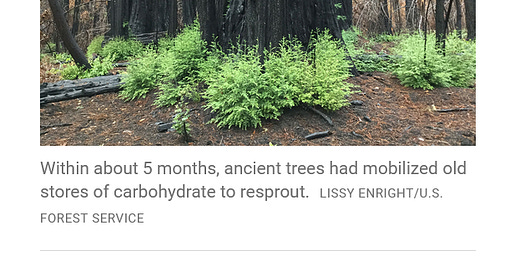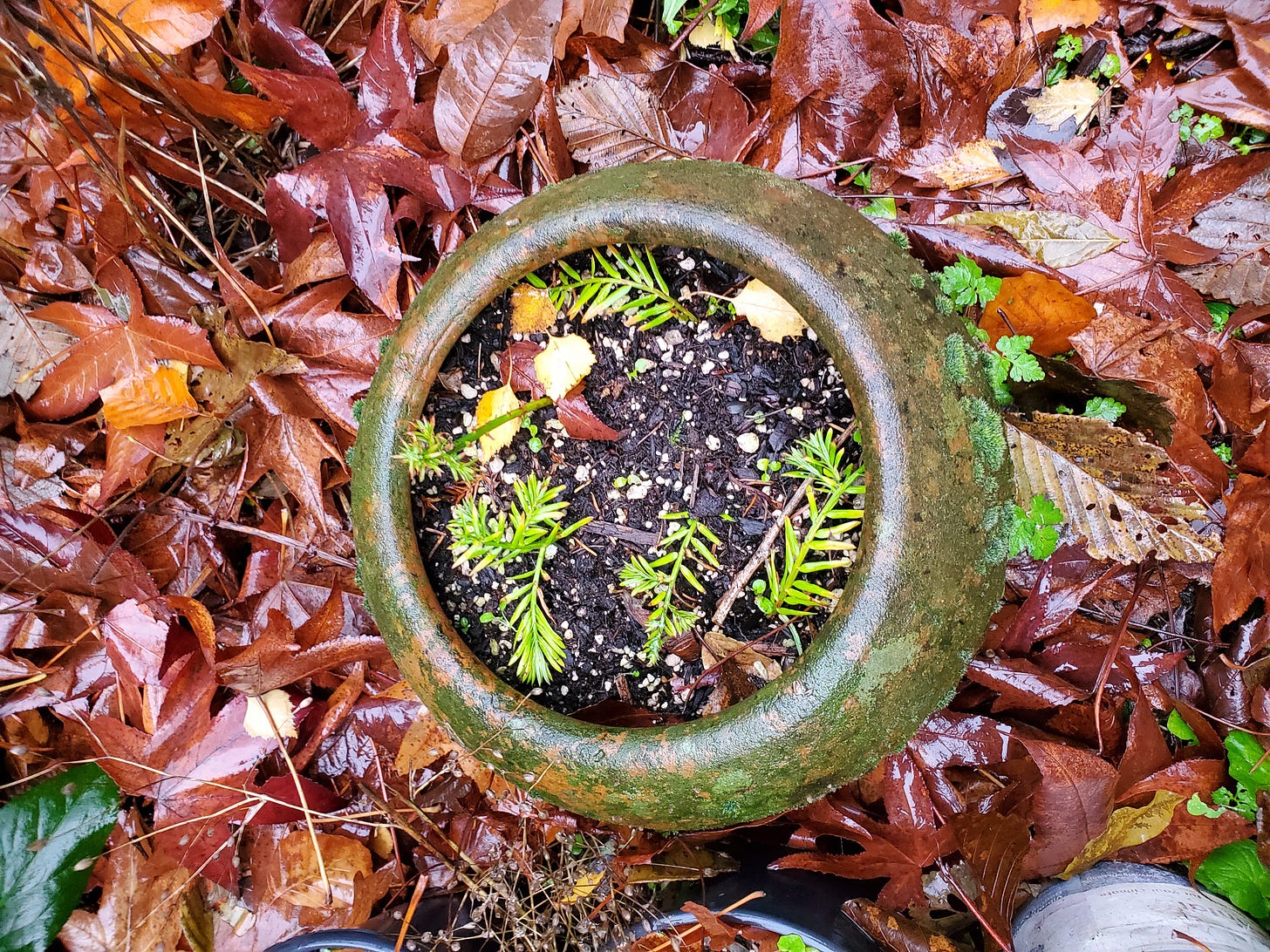just a short note on the fascinating design built into the things God created - in this case, the majestic Coastal Redwoods
Those Redwoods in the picture were badly burnt in a forest fire. Usually, the ground fires don’t reach high enough to burn the upper branches, but in this fire, the trees ‘crowned out’, leaving nothing but some very dead-looking skeletons. But lo and behold, look at those beautiful green sprouts seeming to come out of nowhere.
from Science.org - “Melissa Enright of the U.S. Forest Service…and her team “brought the sprouts back to the lab. There, they radiocarbon dated the molecules within to calculate the average age of those sugars. At 21 years, they are the oldest energy reserves shown to be used by trees…
Average age is only part of the story. The mix of carbohydrates also contained some carbon that was much older. The way trees store their sugar is like refueling a car, Peltier says. Most of the gasoline was added recently, but the tank never runs completely dry and so a few molecules from the very first fill-up remain. Based on the age and mass of the trees and their normal rate of photosynthesis, Peltier calculated that the redwoods were calling on carbohydrates photosynthesized nearly 6 decades ago—several hundred kilograms’ worth—to help the sprouts grow. “They allow these trees to be really fire-resilient because they have this big pool of old reserves to draw on,” Peltier says.
“It's not just the energy reserves that are old. The sprouts were emerging from buds that began forming centuries ago. Redwoods and other tree species create budlike tissue that remains under the bark. Scientists can trace the paths of these buds, like a worm burrowing outward. In samples taken from a large redwood that had fallen after the fire, Peltier and colleagues found that many of the buds, some of which had sprouted, extended back as much as 1000 years. “That was really surprising for me,” Peltier says. “As far as I know, these are the oldest ones that have been documented.”
About 22 years ago, a friend gave me a little Coastal Redwood tree to plant on our property. It grew fast; maybe a little too fast - because last winter, most of the top half of the tree snapped off in a windstorm, and I sadly had to cut it up for firewood.
Much to my suprise, in the following spring, I noticed little sprouts coming from the base of the trunk. In the previous 20+ years, there were no such sprouts, so I wondered what was going on. The above article from SCIENCE mag explains it, and I thought it interesting enough to share it in this substack.
When they first appeared last spring, I plucked a few of the sprouts, dipped the stems in root hormone, and potted them in some good soil. I won’t know until next year if they will take root. I have high hopes of starting my own little Redwood forest.
Notice how much the sprouts have grown in one season! You can see the broken top of the tree, and there is a much smaller branch of the top that didn’t get damaged in the storm, so these sprouts are probably getting nourishment from both the stored energy in the bark and also some new photosynthesis from the small top.
This tree was not damaged by fire; it was traumatized by being broken off by wind. The DNA ‘software’ was triggered to start the sprouts as an emergency survival backup, just like the Redwoods that were burnt.
You might also like “The Most Efficient Form of Solar Energy”, and “What to Keep and What to Cull”, - Part 2 of Forest Management.








This is amazing! Very cool. These mysteries of biology are what I love the most about it. What joy when you solve one of them!